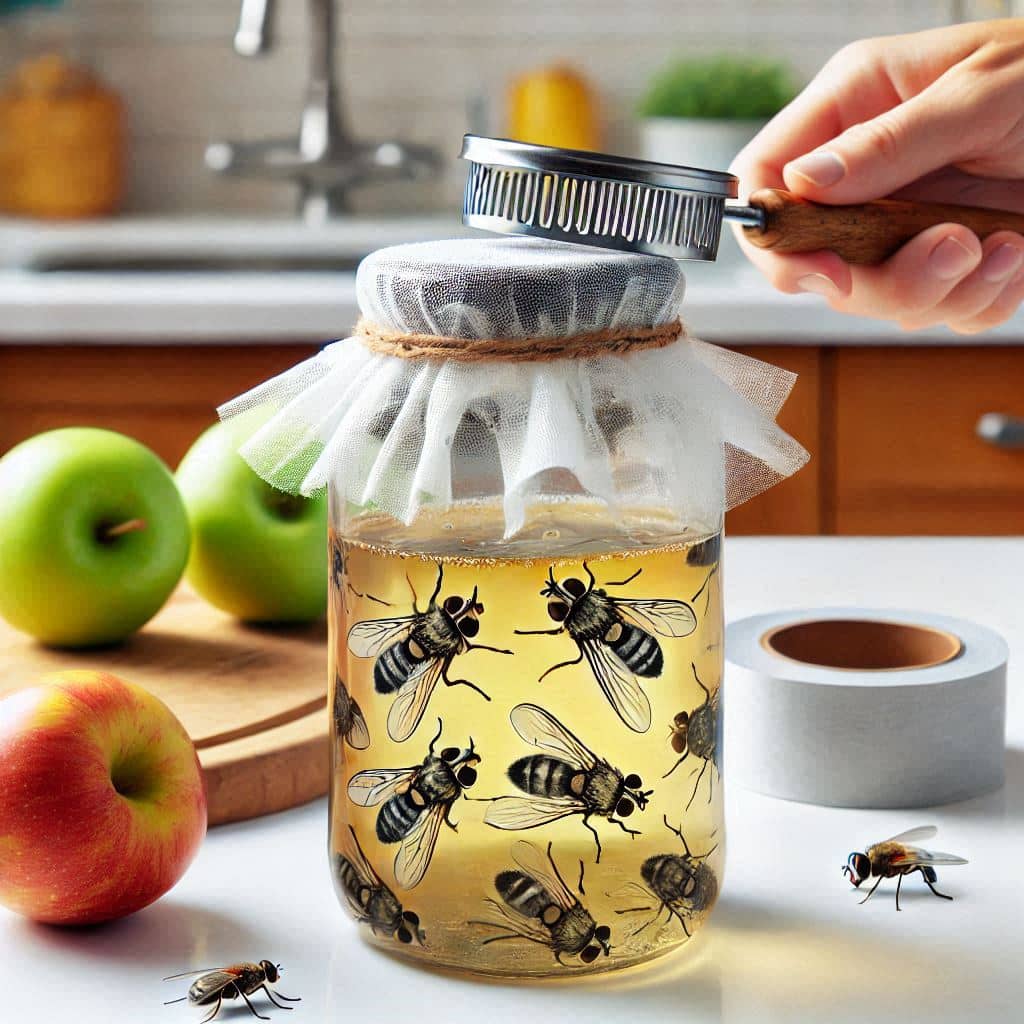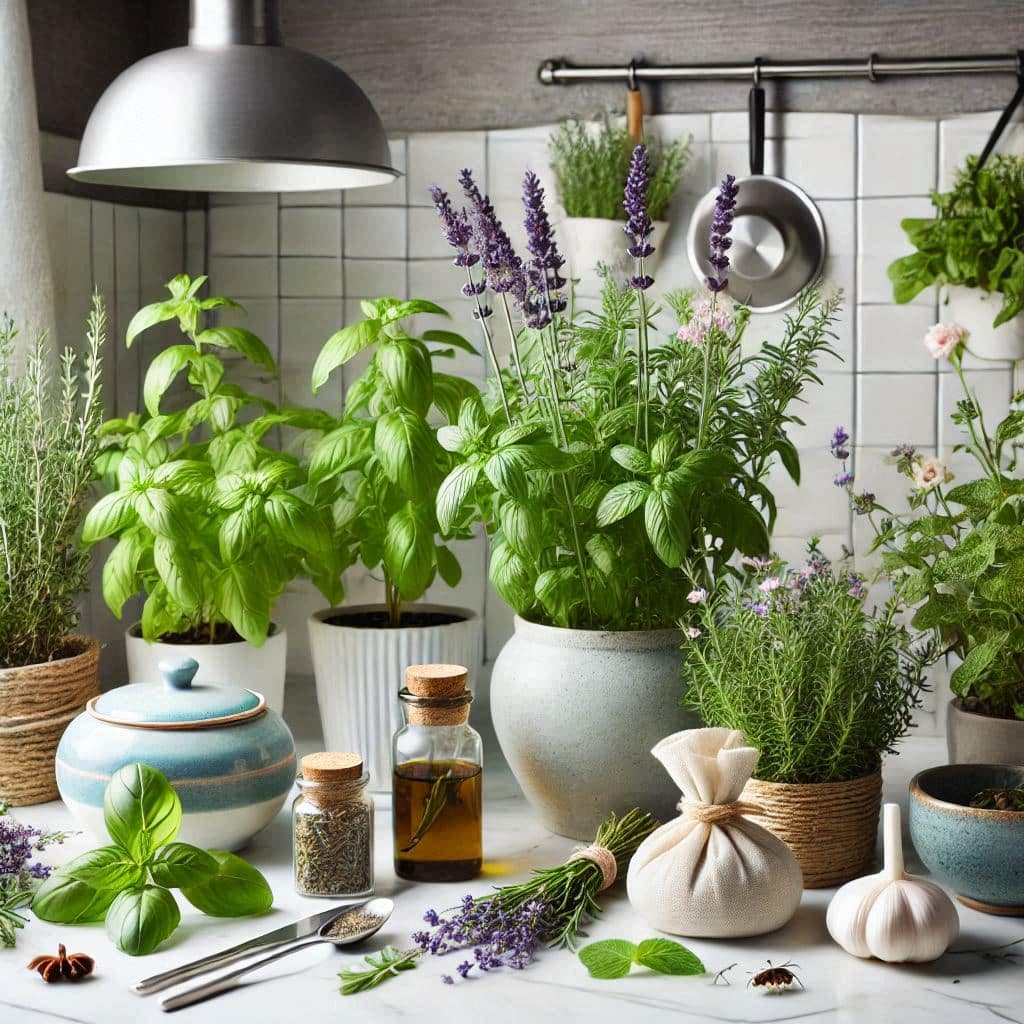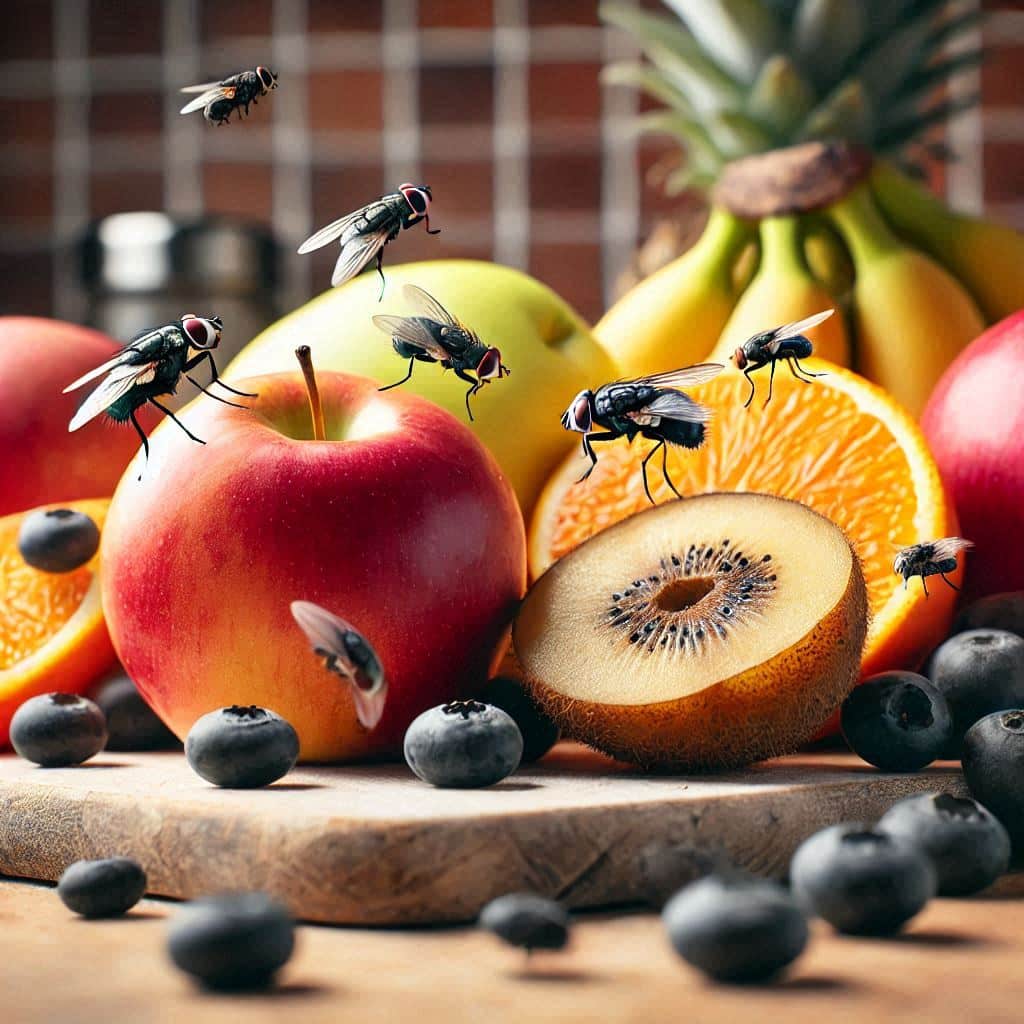Fruit flies can be a real nuisance, especially when they invade your kitchen. If you’ve ever dealt with a fruit fly infestation, you know how quickly these tiny pests can multiply. One of the most effective and eco-friendly ways to combat them is by setting up a fruit fly trap. In this guide, we’ll show you how to create a simple yet effective fruit fly trap using common household ingredients. You’ll also learn why fruit flies are attracted to certain substances, and how you can prevent future infestations, ensuring your kitchen remains pest-free.
What Attracts Fruit Flies? Understanding the Problem
Before diving into solutions, it’s important to understand why fruit flies are drawn to your home in the first place. Unlike other pests that may wander into your house randomly, fruit flies are extremely selective and only target areas with specific attractants. These flies are particularly attracted to sugary substances, fermenting organic matter, and overripe produce.
Fruit flies thrive in environments where there’s decaying organic matter and where sugar fermentation occurs. Their ability to locate these sources quickly is based on their highly sensitive olfactory system, which allows them to detect scents from a great distance.
Main Attractants:
- Overripe Fruits: These are the most common attractant for fruit flies. As fruits ripen and begin to decay, they release volatile compounds that fruit flies are highly sensitive to. Apples, bananas, tomatoes, and grapes are all favorites.
- Fermenting Liquids: Drinks such as wine, beer, and other sugary beverages are a magnet for fruit flies. The fermentation process releases ethanol and other compounds that attract them.
- Dirty Dishes and Spills: Fruit flies are not only drawn to whole fruits but also to sugary spills or leftover food on plates, countertops, or in garbage bins. Overripe fruits or spilled juice provide easy food sources for these pests.
- Fermenting Organic Matter: In addition to fruits and vegetables, fruit flies are attracted to decomposing food scraps in trash bins or compost piles. Even a small amount of leftover food in your trash can be enough to draw them in.
By cleaning up food scraps and storing fruits and vegetables properly, you reduce the likelihood of attracting these pests. However, once they enter your home, getting rid of them can be tricky.
How to Make a Simple DIY Fruit Fly Trap Using Apple Cider Vinegar

Apple cider vinegar is a popular ingredient in many fruit fly traps, and for good reason. It attracts fruit flies because of its sweet, fermenting smell, mimicking the scent of overripe fruit. The best part is that it’s easy to make a trap at home, and it’s an eco-friendly solution that doesn’t involve harsh chemicals.
Steps to Make the Trap:
- Gather Materials: To create this trap, you will need a small jar, apple cider vinegar, plastic wrap, and a rubber band.
- Fill the Jar: Pour about 1/2 inch of apple cider vinegar into the jar. The odor of the vinegar will attract fruit flies from far and wide. This is because the acetic acid in the vinegar mimics the smell of fermentation, which is irresistible to fruit flies.
- Cover with Plastic Wrap: Stretch a piece of plastic wrap over the opening of the jar and secure it with a rubber band. This forms a barrier between the flies and the vinegar, but still allows them to enter.
- Poke Holes: Using a fork or small pin, poke several small holes in the plastic wrap. These holes serve as entry points for the fruit flies. Once they enter, however, they will not be able to find their way out due to the smooth, narrow escape route.
Why It Works:
The simplicity of this trap lies in the combination of the fruit fly’s attraction to the vinegar and the difficulty it faces in escaping. Once inside, fruit flies cannot easily navigate the tight confines of the jar, where they will remain trapped until you dispose of them. This makes it a low-cost, low-effort solution to dealing with fruit flies.
Eco-Friendly Alternatives to Chemical Pesticides for Fruit Flies

While traps are effective, some people prefer to avoid using even natural substances like vinegar in large quantities due to their strong scent or just for a more natural approach to pest control. Fortunately, there are several ways to prevent or reduce fruit fly infestations without relying on harsh chemicals.
Natural Remedies for Fruit Flies:
- Herbs and Essential Oils: Many herbs and essential oils act as natural deterrents for fruit flies. Basil, lavender, mint, and lemongrass all have strong scents that are unpleasant to fruit flies. You can place fresh basil plants on your kitchen counter or use essential oils in a diffuser to create an environment that fruit flies want to avoid. Studies show that essential oils such as citronella, eucalyptus, and peppermint can act as natural repellents for many types of pests, including fruit flies. By strategically placing these herbs or using essential oils, you can create a scent barrier that discourages fruit flies from settling in your home.
- Citrus Peels: Citrus fruits like lemons, oranges, and limes are not only refreshing to us but are also unappealing to fruit flies. The scent of citrus peels deters fruit flies from entering areas where you place them. Try placing fresh peels around your fruit bowl or trash can to prevent attraction.
- Apple Cider Vinegar: Besides attracting fruit flies, apple cider vinegar can also act as a repellent. Filling a bowl with vinegar and leaving it uncovered on your counter can deter flies from coming near.
- Flypaper: Flypaper is another environmentally friendly option, though not as natural as herbs and oils. It’s still non-toxic and effective at capturing fruit flies and other small pests.
Opting for natural repellents and traps can provide a multi-layered defense against fruit flies without the need for chemical pesticides, making it safer for you, your family, and the environment.
5 Simple Steps to Build a Fruit Fly Trap at Home
If you prefer a more hands-on approach, building your own fruit fly trap is simple and cost-effective. All you need are basic household items, and you can have a trap up and running in just a few minutes.
DIY Trap Building Steps:
- Gather Materials: This trap requires a jar, sugar water (made from sugar and warm water), a funnel, and tape.
- Create Sugar Water: Mix one tablespoon of sugar with a small amount of warm water. This creates a sugary solution that fruit flies are attracted to. The sweetness of the solution mimics the attraction of overripe fruit.
- Prepare the Funnel: Take a funnel and cut off the top. Place the narrow part of the funnel inside the jar. The idea is to guide the fruit flies into the jar while preventing them from escaping through the wide opening.
- Secure the Funnel: Use tape to seal the edges of the funnel to the jar. This ensures that the flies won’t be able to escape through any gaps, which is essential for trapping them effectively.
- Set the Trap: Position the trap in an area where you have noticed a high concentration of fruit flies. Common spots include near fruit bowls, compost bins, or the trash can.
Preventing Future Fruit Fly Invasions: Tips and Tricks
After addressing your current fruit fly problem, it’s crucial to implement measures that will help prevent future infestations. Fruit flies can reproduce quickly, so staying on top of prevention is key.
Fruit Fly Prevention Tips:
- Clean Up Spills Immediately: Fruit flies are particularly attracted to sugary substances. Clean up any spilled juice, wine, or sugary drinks right away, especially near your trash can or fruit storage areas.
- Store Produce Properly: Keep fruits and vegetables in the fridge or sealed containers to limit exposure to fruit flies. If you have a fruit bowl, try to rotate its contents frequently to avoid allowing any fruit to become overripe.
- Use Screens on Windows: Installing screens on your windows and doors can help prevent fruit flies from entering your home. This simple step can drastically reduce the likelihood of an infestation.
- Empty Trash Regularly: Fruit flies are drawn to trash, especially if there’s food waste inside. Empty your trash regularly and ensure it’s tightly sealed. You can also use a compost bin that’s tightly covered to minimize the smell of decomposing food.
Conclusion
Fruit flies may be small, but they can quickly become a frustrating problem. Fortunately, by understanding what attracts them and using simple, DIY traps and eco-friendly solutions, you can effectively control and eliminate fruit flies from your home. Whether it’s through the use of apple cider vinegar traps, homemade sugar water solutions, or natural repellents like herbs and essential oils, there are many ways to manage fruit flies without resorting to harsh chemicals. By also implementing preventive measures, such as proper fruit storage and regular cleaning, you can keep your kitchen fruit fly-free year-round.
FAQs
What attracts fruit flies to my home? Fruit flies are drawn to overripe or decaying fruits, fermenting liquids, and dirty dishes. They are particularly attracted to sugary substances like leftover juice or food debris, so keeping your kitchen clean and storing produce properly will help prevent infestations.
How do I make a simple DIY fruit fly trap? You can create an effective fruit fly trap using apple cider vinegar. Simply fill a jar with vinegar, cover it with plastic wrap, poke a few holes in it, and secure it with a rubber band. The scent of the vinegar attracts fruit flies, but once they enter the jar, they can’t escape.
Are there eco-friendly ways to keep fruit flies away? Yes! You can use natural repellents like basil, lavender, peppermint, and citrus peels to deter fruit flies. Essential oils and herbs placed around your kitchen or used in diffusers can help keep these pests at bay without harmful chemicals.
How can I prevent future fruit fly infestations in my kitchen? To prevent fruit flies, clean spills immediately, store fruits and vegetables in sealed containers, empty trash bins regularly, and use screens on windows to keep flies from entering. These measures will help keep your home pest-free.
What are the steps to build a DIY fruit fly trap with sugar water? To build a simple fruit fly trap, mix sugar with warm water to create sugar water. Place a funnel inside a jar, secure it with tape, and place the jar where fruit flies are active. The flies will be attracted to the sugar water and get trapped inside.

